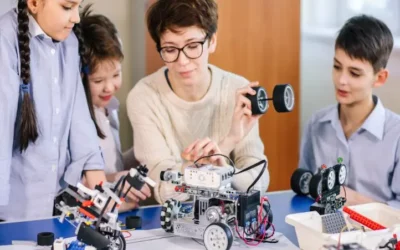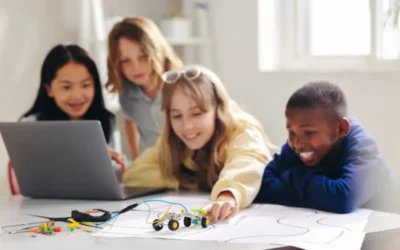Imagine a world where your ideas come to life with a flicker of wires, a hum of motors, and the magic of code. Robotics, the realm where innovation meets automation, holds the key to unlocking this enchanting world of possibilities. In this journey of discovery, there’s no substitute for hands-on experiences. They breathe life into the excitement of learning robotic lessons, making it an indispensable tool in our quest for knowledge and innovation.
Table of contents
- Lesson 1: Robot Anatomy Basics
- Lesson 2: Introduction to Coding
- Lesson 3: Robot Movements and Sensors
- Lesson 4: Exploring Robot Design
- Lesson 5: Simple Machines and Robotics
- Lesson 6: Robot Challenges and Obstacle Courses
- Lesson 7: Robotic Art and Creativity
- Lesson 8: Robot Programming Adventures
- Lesson 9: Teamwork and Collaboration
- Lesson 10: Robotics in Real Life
- The Benefits of Robotic Lessons and Activities
- Age-Appropriate Robotics Activities
- Conclusion
- Frequently Asked Questions
Lesson 1: Robot Anatomy Basics
Have you ever wondered how robots work and how they are put together? Well, you’re in luck! In this blog, we’ll dive into the exciting world of robotics and take you through a hands-on activity to build a simple robot model. No engineering degree is required – just curiosity and a willingness to learn!
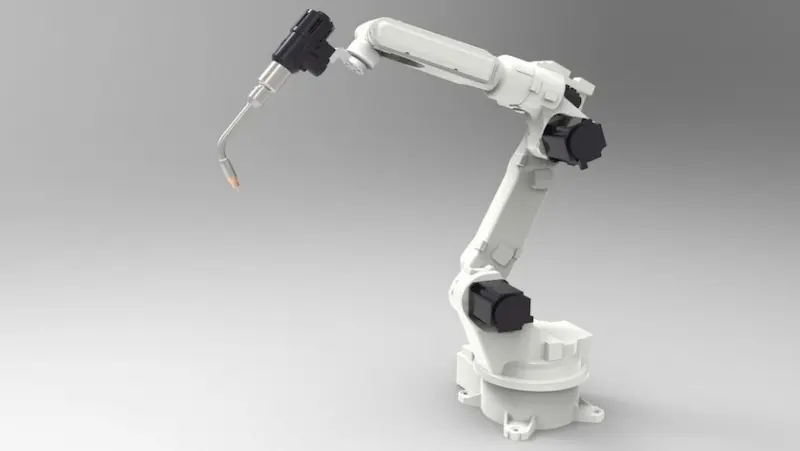
Understanding the Components
Before we jump into building our robot model, let’s briefly understand the key components that make up a typical robot:
1. Chassis: This is the body of the robot, and it provides structure and support for all the other components.
2. Wheels: Most robots use wheels for movement. The type and number of wheels can vary depending on the robot’s design.
3. Power Source: Robots need power to function. This can be in the form of batteries or a wired power source.
4. Motors: Motors are responsible for driving the wheels or any other moving parts of the robot.
5. Sensors: Robots often have sensors that allow them to interact with their environment. These sensors can include cameras, ultrasonic sensors, or touch sensors.
6. Microcontroller: This is like the robot’s brain. It processes information from sensors and sends commands to the motors.
Hands-On Activity: Building a Simple Robot Model
Now, let’s put this knowledge into action by building a basic robot model using household items.
Here’s what you’ll need:
1. A small cardboard box (for the chassis)
2. Four bottle caps (for wheels)
3. A battery holder with batteries
4. Two small DC motors (you can salvage these from old toys)
5. A switch (optional for turning the robot on and off)
6. Some wires
7. Glue, tape, and a few basic tools
Steps:
1. Prepare the Chassis: Take your cardboard box and cut it into a rectangular shape. This will be the body of your robot.
2. Attach the Wheels: Glue the bottle caps to the bottom of the cardboard box to serve as wheels. Make sure they’re evenly spaced.
3. Install the Motors: Attach one motor to the front of the robot and one to the back using tape or glue. These will drive the wheels.
4. Connect the Motors: Using wires, connect the motors to the battery holder. One motor’s wires should connect to the positive and negative terminals of one battery, while the other motor should connect to another set of terminals.
5. Add a Switch: If you have a switch, you can wire it in between the batteries and the motors to easily turn your robot on and off.
6. Decorate Your Robot: Get creative and decorate your robot’s chassis to give it a unique look!
7. Program Your Robot: If you’re feeling adventurous, you can program your robot to move forward, backward, or even turn. You can use a microcontroller like Arduino or Raspberry Pi for this step.
8. Test and Play: Turn on your robot and watch it go! Experiment with different movements and see what your robot can do.
Lesson 2: Introduction to Coding

Robotics: Where Imagination Meets Reality
Imagine having the power to create a machine that can navigate through mazes, clean your room, or even dance to your favorite tune. That’s where coding comes into play. It’s the magic wand that brings robots to life.
When you code a robot, you’re essentially telling it what to do, step by step. You decide how it moves, when it stops, and how it responds to its surroundings. The cool part? You can be as creative as you want. Want your robot to do the moonwalk? Code it! The possibilities are limited only by your imagination.
But coding isn’t just about making robots move; it’s also about problem-solving. Robots encounter challenges in their tasks, just like we do in our daily lives. Coding helps them figure out the best solutions, making robots not just smart but adaptable.
Coding Games and Challenges: Fun with a Purpose
Now, let’s talk about coding games and challenges. They’re like a playground for your brain, a place where learning meets fun. Coding games are designed to be engaging, like solving puzzles or playing video games, but with a twist – you’re in control.
These games introduce you to coding concepts in a playful way. You get to write code to solve problems or complete tasks within the game. It’s like having a secret superpower – the power to control the digital world.
But here’s the beauty of it: you don’t need to be a coding expert to start. Coding games often start with simple challenges and gradually increase in complexity. It’s a journey of growth, where you learn, make mistakes, and improve. Plus, it’s incredibly satisfying to see your code work and achieve your goals in the game.
Lesson 3: Robot Movements and Sensors

1. The Dance of Motors and Wheels
Let’s start with the basics. Most robots are equipped with motors that serve as their muscles. These motors work tirelessly to spin wheels, joints, or other mechanical components, propelling the robot forward, backward, or in any direction its heart desires. It’s like the wheels on your bicycle but with a lot more calculations involved.
2. Taking Steps with Sensors
Robots don’t move blindly. Just as we use our senses to avoid obstacles and stay on the right path, robots rely on sensors to make sense of their surroundings. These sensors come in various flavors, such as cameras, ultrasonic sensors, and lidar.
Imagine a robot with a camera for eyes. It captures images of the world around it, allowing the robot’s brain to analyze the pictures and figure out where it is, what’s in front of it, and what lies ahead. These sensors help the robot make informed decisions about its next move, just like we do when we decide to cross the street or dodge a rogue skateboard.
3. The Art of Navigation
Now, let’s talk about navigation. Robots are skilled cartographers, who constantly map their environment. They create digital maps that detail the layout of a room or a factory floor. As they move, they compare what they see through their sensors with the map they’ve created. If something doesn’t match up, they adjust their course, just as we would if we took a wrong turn.
4. Sensor-Activated Robots
Imagine a scenario where a robot is tasked with delivering packages in a busy office. It uses its sensors to detect obstacles, like people or chairs, and its map to find the shortest route to its destination. If someone suddenly walks in front of it, the robot’s sensors alert it to stop and wait until the path is clear. It’s a bit like a polite pedestrian at a busy intersection, patiently waiting for the green light.
Lesson 4: Exploring Robot Design
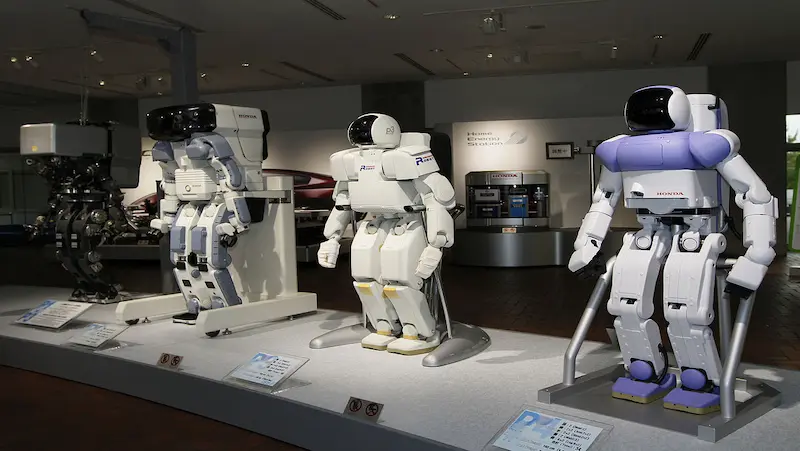
1. Form Follows Function
In the realm of robotic lessons, the age-old design principle of “form follows function” holds true. The primary goal setting is to create a robot that can perform its intended tasks efficiently and effectively. However, that doesn’t mean aesthetics should be an afterthought. A well-designed robot can enhance its usability, user-friendliness, and even acceptance in society.
2. The Visual Symphony
The aesthetics of a robot begin with its appearance. Consider the sleek curves of a sports car, the elegance of a smartphone, or the timeless beauty of a well-crafted piece of furniture. These designs are not just about looks; they’re about creating a harmonious visual experience. When designing a robot prototype, it’s essential to think about its visual appeal.
3. Materials Matter
The choice of materials can transform a robot from a mere machine into a work of art. Whether it’s the warmth of wood, the futuristic allure of metal, or the softness of textiles, the materials used in a robot’s construction can evoke emotions and connect with users on a deeper level.
4. The Human-Robot Connection
Robots are becoming an integral part of our lives, from healthcare companions to household helpers. Designing robots that can establish a human-like connection is crucial. Facial expressions, body language, and even a friendly color palette can make users feel more at ease and comfortable with these mechanical companions.
5. Balancing Act
A well-designed robot prototype is a delicate balance between aesthetics and functionality. It should be visually appealing, user-friendly, and capable of performing its tasks efficiently. Achieving this balance requires collaboration between engineers, designers, and artists.
6. The Future of Robot Design
As technology continues to advance, the aesthetics of robotic lessons will play an increasingly vital role. Robots will not only be tools but also companions and even forms of artistic expression. Designers and engineers will work hand in hand to create robots that are not just efficient but also emotionally resonant.
Lesson 5: Simple Machines and Robotics
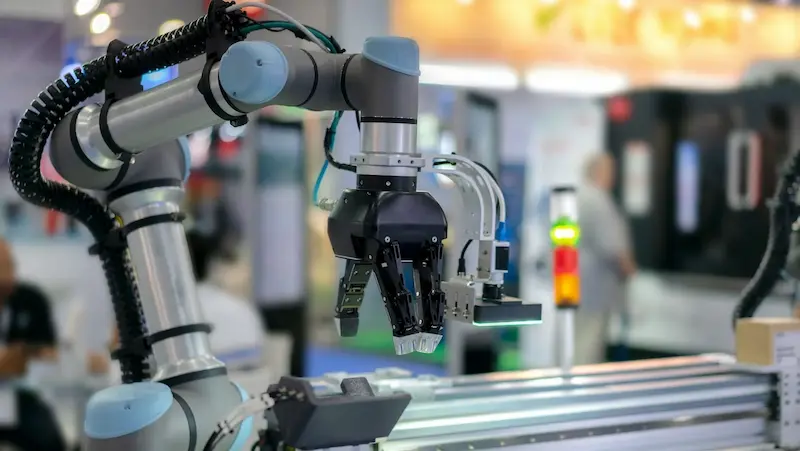
1. Simple Machines: The Unsung Heroes
Before diving into the world of robotics, let’s give some credit where it’s due – to the simple machines. These elementary mechanisms, dating back to ancient times, have always had a special place in human ingenuity. They are the gears, so to speak, that make complex tasks seem effortless.
2. The Marriage of Simple Machines and Robots
Now, imagine a robot as a symphony orchestra, with each instrument playing its role harmoniously. Simple machines are like musicians, each contributing its unique sound to create beautiful music. In the world of robotic lessons, simple machines enhance a robot’s capabilities in numerous ways.
3. The Robotic Lever: A Mechanical Marvel
Our first stop in exploring this connection is the lever. Levers are one of the simplest machines, yet they offer incredible mechanical advantages. In robots, levers help in lifting heavy objects, like an industrial arm extending to grab a payload. By using a lever, a robot can perform feats of strength that would be impossible for a human.
4. Building a Robotic Lever
To understand this better, let’s create a mini robotic lever system. Grab a ruler, a pencil, and some tape. Attach the ruler horizontally to the pencil, making sure it can pivot freely. Now, try lifting a small object with one end of the ruler while applying force to the other end. Voila! You’ve built a basic lever system.
5. Pulley Systems: Precision in Motion
Moving on to pulleys, these nifty devices are all about precision. In robots, they’re often used for controlled and smooth movement. Think of a robot arm in a manufacturing plant, gliding effortlessly due to a network of pulleys and cables. Pulleys make intricate tasks look easy, much like the way a puppeteer controls a marionette.
Lesson 6: Robot Challenges and Obstacle Courses
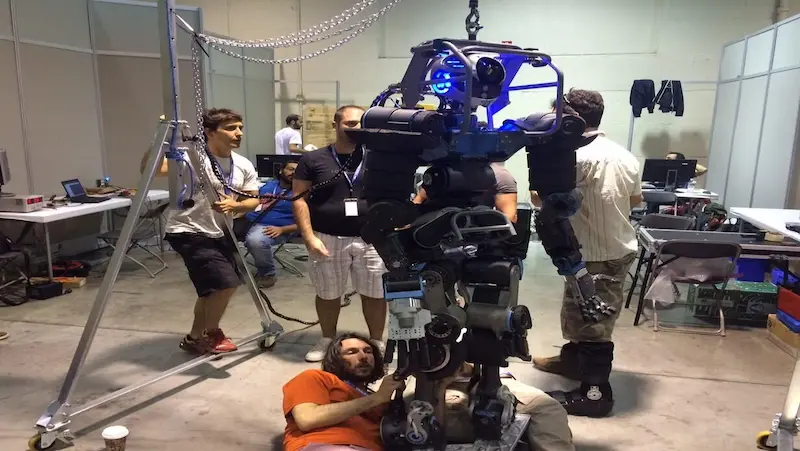
The Heart of Robotics Competitions
At the core of robotic lessons competitions lies the challenge of designing robots capable of overcoming complex obstacles. These obstacles can mimic real-world scenarios or take the form of unique, purpose-built challenges. The goal is to test a robot’s agility, precision, and problem-solving abilities in an arena filled with hurdles and surprises.
Designing the Perfect Obstacle Course
Creating a successful obstacle course is an art in itself. It’s not just about throwing together a random assortment of barriers; it’s about crafting a journey that pushes the limits of what robots can do.
Designers must consider various factors:
1. Diversity of Challenges: Obstacle courses should feature a mix of challenges, from basic navigation tasks to more complex puzzles. This keeps participants on their toes and ensures a well-rounded competition.
2. Scalability: Courses should be adjustable in difficulty to cater to participants of different skill development levels. This allows beginners and experts to compete on an even playing field.
3. Safety: Safety should always be a top priority. The course should not pose any physical harm to participants or spectators, and measures should be in place to prevent accidents.
4. Innovation: Introduce novel elements and technology into the course to keep the competition fresh and exciting. Innovation drives progress in the field of robotic lessons.
Navigating the Maze
Now, let’s talk about the art of navigating these obstacle courses. It’s not just about programming a robot to move from point A to point B. It’s about adaptability, problem-solving, and strategic decision-making:
1. Sensors and Perception: Robots must be equipped with sensors like cameras, LiDAR, and ultrasonic sensors to perceive their surroundings accurately. This data is crucial for making informed decisions on the fly.
2. Algorithms and AI: The robot’s brain relies on sophisticated algorithms and AI to process sensor data and plan its path through the obstacles. Machine learning and computer vision are often essential tools here.
3. Real-time Decision Making: Obstacle courses are dynamic, with unexpected challenges. Robots must be capable of making real-time decisions to adapt to changing situations.
4. Teamwork and Strategy: In team-based competitions, coordination and strategy are key. Communication between robots and teamwork among participants is crucial for success.
Lesson 7: Robotic Art and Creativity
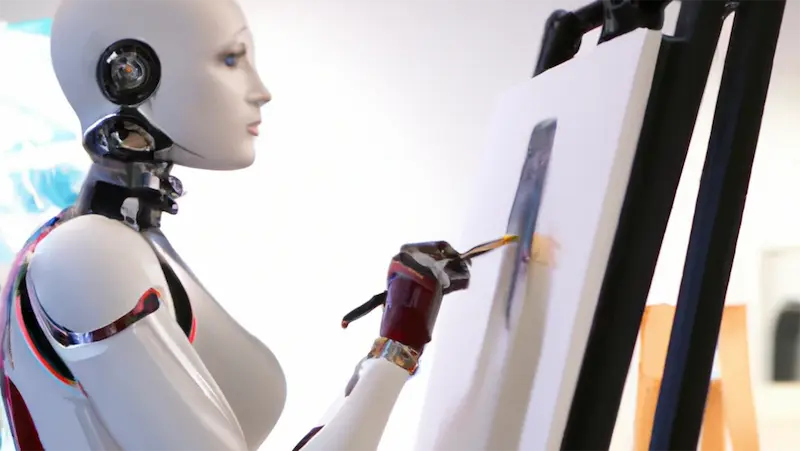
1. The Canvas of Imagination
Artists have always been pioneers of innovation, and the world of robotic lessons is no exception. The canvas is no longer confined to paper or canvas; it now extends to three-dimensional space, moving, interacting, and engaging with the observer. Robotic lessons provides artists with a unique toolset to breathe life into their creations, transcending traditional boundaries.
2. The Robotic Artists
Imagine an assembly of gears, sensors, and microcontrollers, coming together to choreograph a ballet of movement. Robotic artists, often working alongside engineers and programmers, create sculptures that evolve, react, and evolve again. They breathe life into their creations, making them interactive, responsive, and deeply engaging.
3. The Fusion of Science and Art
Combining art and robotic lessons isn’t just about producing visually stunning pieces; it’s about infusing them with emotion and meaning. Robotic artists explore themes of identity, emotion, and the human condition through their creations. They provoke thought and elicit emotional responses, much like traditional artworks.
4. Interactive Experiences
One of the most enchanting aspects of robotic art is its interactivity. These creations often respond to their surroundings or viewer input, creating a dynamic and participatory experience. Imagine a sculpture that changes its form based on the mood of the room or a robotic lessons painting that evolves as you watch it, adapting to your presence.
5. Challenges and Boundaries
Of course, the fusion of art and robotics is not without its challenges. Artists must navigate the complexities of technology while staying true to their artistic vision. Balancing the technical aspects with the creative process can be a delicate dance.
The Future of Robotic Art
As technology continues to advance, the possibilities for robotic art are endless. We can anticipate more immersive, interactive, and emotionally resonant pieces. Robotic artists will push the boundaries of what’s possible, continually surprising and captivating us with their creations.
Lesson 8: Robot Programming Adventures
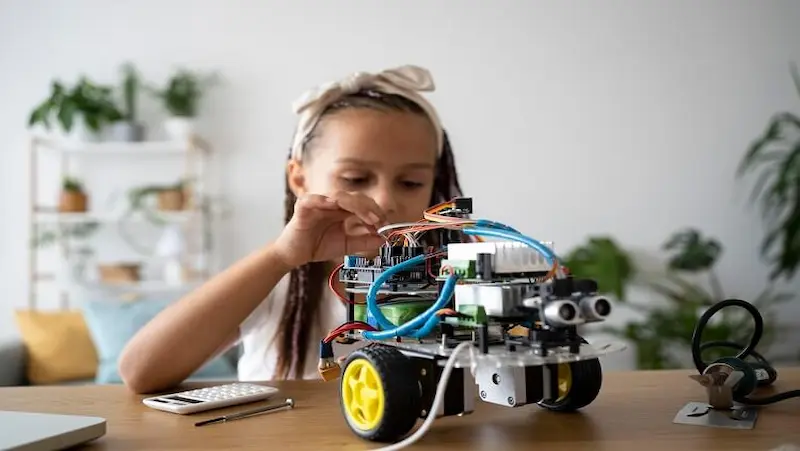
What’s a Programming Language
Think of a programming language as a secret code that you and a robot can use to talk to each other. Imagine you have a robot buddy, and you want to tell them to move forward, backward, or maybe even do a little dance. That’s where programming languages come in handy.
Meet Your Robot Friend
Before we start writing code, let’s meet your new friend: the robot. Robots are cool machines that can do all sorts of things, but they need instructions to do them. Our job is to give them those instructions in a language they can understand.
The Code Magic
Okay, so we want to make our robot do something awesome, like move forward. We need to write some code to make it happen.
Here’s a simple example in a programming language called Python:
Python
Copy code
robot.move_forward()
It’s like telling your robot, “Hey buddy, I want you to move forward!” And guess what? The robot understands this special language, Python, and starts moving just as you commanded.
Breaking It Down
Let’s break down that code:
robot: This tells the robot who we’re talking to.
move_forward(): This is the action we want the robot to perform, like taking a step forward.
Programming languages have their own rules and words, just like any language. But don’t worry; you’ll get the hang of it with a little practice.
Making Your Robot Dance
Now, let’s make your robot dance! How about a simple dance move like “shake it to the left”? We can do it like this:
python
robot.turn_left()
robot.shake()
Lesson 9: Teamwork and Collaboration
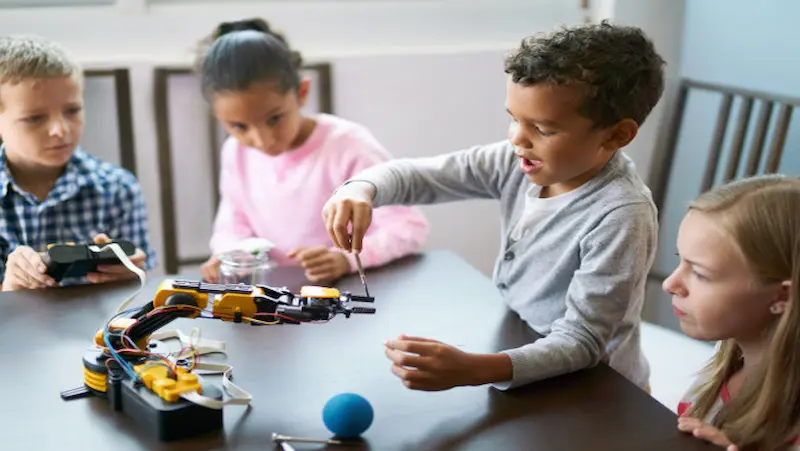
1. The Beauty of Diverse Perspectives
Robotic projects are complex, involving a multitude of skills, from programming and electronics to mechanical engineering and design. Encouraging collaboration means inviting individuals with different expertise and perspectives to the table. When diverse minds unite, magical things can happen.
Imagine a team with a software wizard, a hardware genius, and a creative thinker. Together, they can breathe life into a robot that not only functions flawlessly but also captivates with its aesthetics. Embrace diversity in your robotics team, and watch innovation flourish.
2. Learning Through Shared Knowledge
In group robotics challenges, everyone is a student and a teacher. Collaboration allows team members to learn from one another. The programmer can grasp the intricacies of mechanical design, while the engineer can gain insights into coding. This shared knowledge elevates the skills of each member and paves the way for better problem-solving.
When everyone contributes their unique knowledge sharing and experiences, the project becomes a hub of learning and growth. It’s not just about building robots; it’s about building expertise and fostering a culture of continuous self improvement.
3. Splitting the Load and Boosting Efficiency
Robotic projects are often daunting, with tight deadlines and complex tasks. Collaboration is the secret sauce that can make the journey smoother. When team members divide responsibilities based on their strengths, the workload becomes manageable, and efficiency soars.
Think of it as a well-orchestrated dance. Each team member has their part to play, and when they sync up, the project progresses seamlessly. Collaboration isn’t just about working together; it’s about working smarter.
4. Resilience in the Face of Challenges
Challenges are part and parcel of any robotics project. From technical glitches to unexpected obstacles, the road is rarely smooth. However, when a team collaborates effectively, they develop collective resilience.
Facing a challenge as a group means that the burden is shared. Brainpower is pooled, and solutions emerge faster. Moreover, the emotional support within a collaborative team can be a game-changer when the going gets tough.
5. Celebrating Shared Success
At the end of a collaborative robotics project, success is sweeter because it’s shared. The joy of achieving something remarkable with a group of like-minded individuals is unparalleled. It’s a moment for high-fives, fist bumps, and shared smiles.
Celebrating as a team also fosters camaraderie and a sense of belonging. The bonds formed during the project often extend beyond its completion, creating a network of collaborators for future endeavors.
Lesson 10: Robotics in Real Life
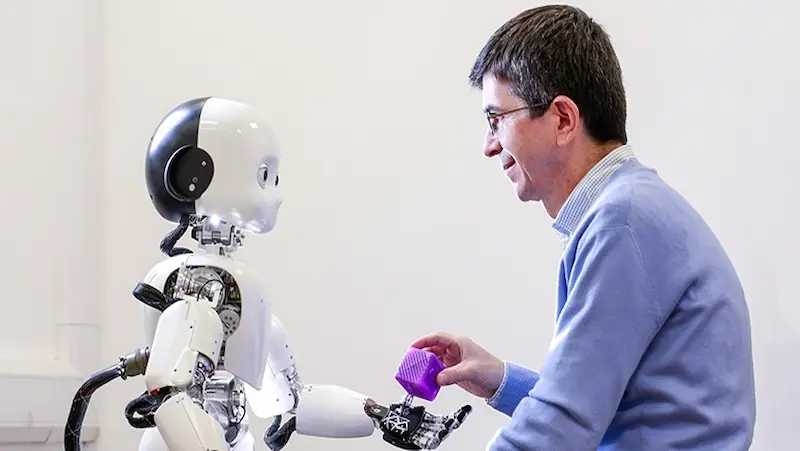
Exploring Real-World Robotics
Now, let’s get into the exciting part – the real-world applications of robotic lessons. Robots aren’t just about science fiction anymore; they’re a significant part of our daily lives.
Here are some areas where robots are making a real impact:
1. Healthcare: Robotic surgery is a game-changer. Surgeons can now perform precise, minimally invasive procedures with the help of robots, reducing recovery times and improving patient outcomes. It’s like having a steady hand that never trembles.
2. Agriculture: Ever heard of “precision agriculture”? It’s all about using robots and drones to optimize farming practices. These robots can plant, monitor crops, and even pick fruit, increasing efficiency and reducing the need for manual labor.
3. Manufacturing: Robots have been in manufacturing for a while, but they’re becoming smarter and more adaptable. They work alongside humans, handling repetitive tasks and heavy lifting, freeing up people to focus on more complex jobs.
4. Space Exploration: Yes, even in space! Robots like the Mars rovers are our eyes and hands on other planets. They help us explore the unknown and gather data that would otherwise be impossible to obtain.
The Benefits of Robotic Lessons and Activities
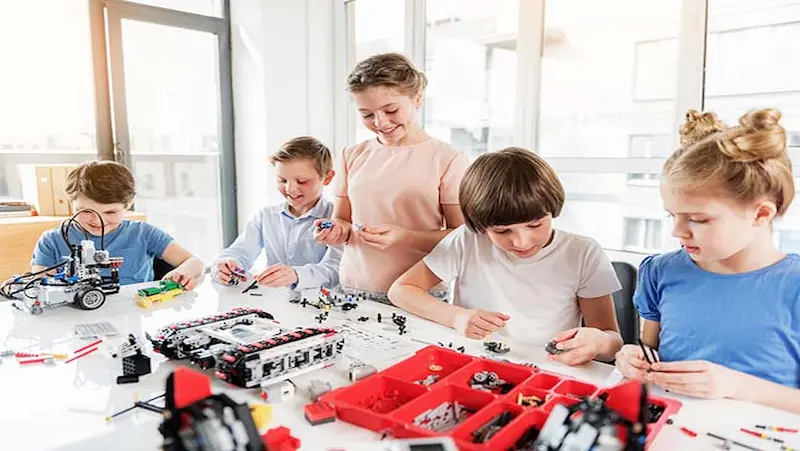
The Importance of Problem-Solving
Problem-solving is like a universal key that unlocks countless doors in life. Whether it’s tackling complex math equations, troubleshooting a computer glitch, or finding creative solutions to everyday challenges, the ability to think critically and solve problems is a skill that transcends boundaries. It empowers children to confront obstacles head-on, approach situations with confidence, and adapt to new circumstances.
Cultivating a Passion for STEM
STEM subjects form the bedrock of problem-solving. They encourage curiosity, exploration, and discovery. Here’s how you can ignite a passion for STEM in your child’s heart:
1. Hands-On Learning
Encourage hands-on experiences. Building a model rocket, experimenting with simple chemical reactions, or programming a basic programmable robot for kids can make learning fun and tangible.
2. Real-world Applications
Show your child how STEM concepts apply to everyday life. From explaining the physics behind a bicycle to discussing the technology that powers smartphones, make connections that spark their interest.
3. Explore Nature
Nature is a fascinating classroom. Take your child on hikes, explore the night sky, or examine insects under a magnifying glass. Observing the world around us often leads to questions and a deeper appreciation for science.
4. Encourage Questions
Welcome questions and curiosity. Foster an environment where it’s okay not to have all the answers but to be excited about finding them together.
5. Role Models
Introduce your child to role models in STEM fields. Share stories of scientists, engineers, and inventors who have made a positive impact on the world.
Preparing for the Future
As we prepare our kids for the future, let’s remember that the world is evolving, and so are the skills needed to succeed. By instilling problem-solving abilities and nurturing a love for STEM from a young age, we’re setting them on a path of lifelong learning and adaptability. These skills will not only serve them well in their academic skills pursuits but also in facing the challenges and opportunities that the future holds.
Age-Appropriate Robotics Activities
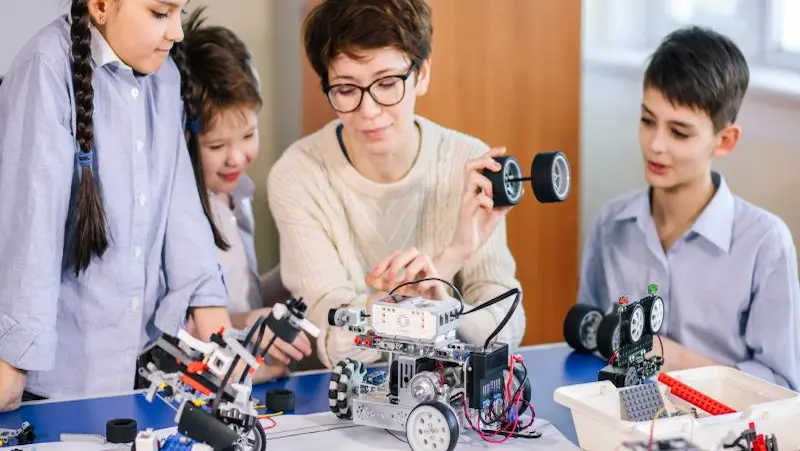
Robotics for Preschoolers
Preschoolers may be tiny, but their curiosity knows no bounds. Introducing robotics to them can be as simple as playing with age-appropriate robot toys. These toys can teach them basic concepts like cause and effect, as they push buttons and watch their robotic friends respond. It’s all about nurturing their fascination with the world of machines.
Elementary School Kids
As kids progress into elementary school, they’re ready for more hands-on experiences. Robotics kits designed for this age group enable them to build simple robots and learn about programming through intuitive interfaces. These experiences help them grasp the fundamentals of logic, sequencing, and problem-solving in a playful and engaging way.
Middle School Students
By the time kids reach middle school, they’re prepared to dive deeper into the world of robotics. Here, they can explore more complex kits, delve into coding languages like Scratch or Python, and even participate in robotics competitions. Robotics classes for kids not only enhance technical skills but also cultivate teamwork, critical thinking, and perseverance, equipping young learners with essential life skills.
Conclusion
In wrapping up our journey through the world of robotic lessons, let’s reflect on the gems of wisdom we’ve uncovered. We’ve witnessed how robotic lessons have evolved from a mere dream to a transformative reality, touching every facet of our lives. The key takeaways? Embrace the ever-expanding horizons of technology, nurture your curiosity, and never shy away from innovation.
To all you young innovators out there, the future beckons with open arms. Dive headfirst into the world of robotic lessons, where your creativity knows no bounds. Remember, it’s not just about building machines; it’s about crafting solutions that can change the world.
So, go ahead, tinker with your ideas, collaborate with fellow enthusiasts, and make your mark in this fascinating realm of robotics. The world is waiting for your genius to shine, and the possibilities are endless.
To get your hands on more educational and free resources on coding for kids, robotics for kids, financial education for kids, etc., do check out the BrightCHAMPS Page now!
To get your hands on more such articles, educational content, and free resources on coding for kids, robotics courses, game development, etc., check out the BrightCHAMPS Blog Page now!
Frequently Asked Questions
A1. You don’t need to be a robotics expert! Encourage curiosity, ask questions together, and explore beginner-friendly robotics kits or clubs in your area to foster your child’s interest.
A2. Yes, there are many! Check out websites like Khan Academy, Code.org, or platforms like Coursera and edX, which offer virtual robotics courses suitable for various age groups.
A3. Safety first! Make sure kids wear safety goggles when needed, avoid loose clothing around moving parts, and follow manufacturer’s guidelines. Supervision and understanding the materials are key.
A4. Start small! Begin with basic robot-building kits, integrate robotics-themed projects into STEM subjects, or explore coding with tools like Scratch or Blockly. Seek guidance from robotics educators if needed.

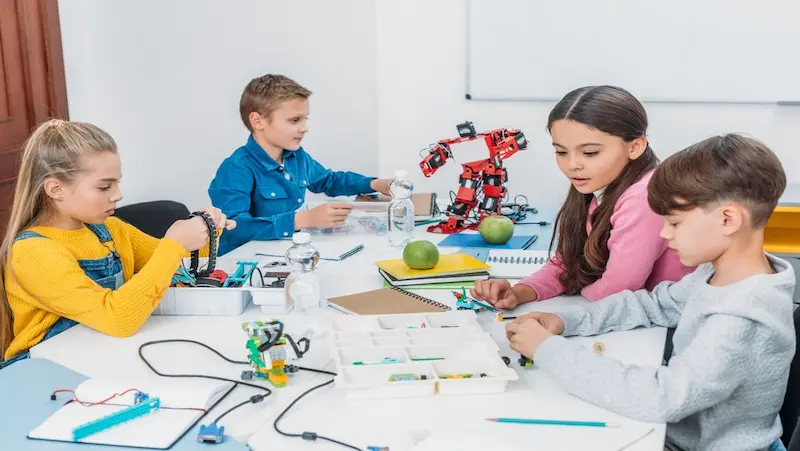
 We are an army of educators and passionate learners from BrightChamps family, committed to providing free learning resources to kids, parents & students.
We are an army of educators and passionate learners from BrightChamps family, committed to providing free learning resources to kids, parents & students.








